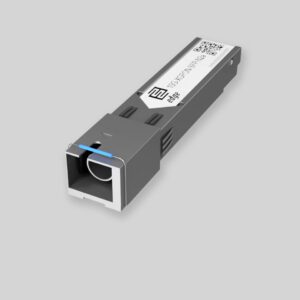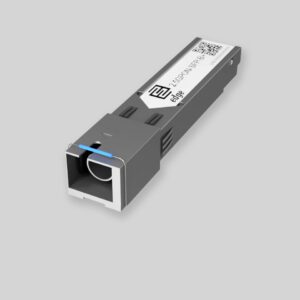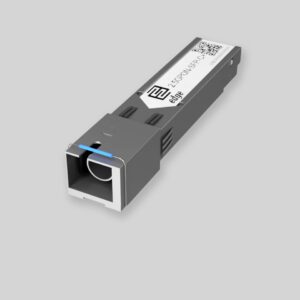xPON (Passive Optical Network) transceivers are designed to be compatible with widely used telecom operator OLT access network equipment
xPON Transceiver Portfolio
Our compatible xPON transceiver portfolio includes GPON OLT SFP`s (compatible optical transceivers) with speeds ranging from 2.5G up to 10G. xPON (Passive Optical Network) transceivers are devices that are used to transmit and receive data over a PON (Passive Optical Network). PONs are a type of access network that uses optical fibers to provide high-speed internet, voice, and video services to multiple customers over a single fiber. xPON transceivers are typically located at the customer premises and at the network provider’s central office. xPON transceivers use Wavelength Division Multiplexing (WDM) technology to transmit multiple signals over a single fiber. The most common types of xPON systems are GPON (Gigabit-capable PON), EPON (Ethernet PON), and XG-PON (10 Gigabit-capable PON). GPON and EPON are typically used for residential and small business applications, while XG-PON is used for high-bandwidth applications such as video on demand and business services.
xPON transceivers offer a number of benefits over traditional copper-based access networks. They provide higher bandwidth, longer reach, and greater reliability. They also have lower power consumption and are more resistant to electromagnetic interference. They are also more secure than copper-based networks. EDGE Optic offers compatible GPON, XGPON and XGSPON & GPON optical transceivers for various brands of OLT (Optical Line Terminal) equipment.
GPON SFP transceiver are classified based on their maximum transmit and receive optical power levels. The two main classes of GPON optical transceivers are Class B and Class C. Class B GPON optical transceivers have a maximum transmit optical power level of +1 dBm and a maximum receive optical power level of -31 dBm. They are typically used in applications where the distance between the transceiver and the OLT is longer. Class C, which has a maximum transmit optical power level of +3 dBm and a maximum receive optical power level of -29 dBm. It’s important to note that these classes are defined by ITU-T G.984.2 standard. GPON transceivers can be used for different applications and the class selection will depend on the specific requirements of the network and the distance between the transceiver and the OLT.
Please contact us if you have any questions.
GPON-OLT-CLASS B+ and C+
GPON-OLT-CLASS B+ is a type of GPON optical line terminal (OLT) transceiver that conforms to the Class B+ standard defined by the ITU-T G.984.4 specification. GPON-OLT-CLASS B+ transceiver is designed for use in GPON networks that support higher data rates and longer distances than the standard Class B GPON. GPON-OLT Class C+ is an OLT compatible transceiver that supports the GPON standard and has the capability to handle higher bandwidth and more users than a standard Class B/B+ transceiver. It is designed to support a larger transmission powers leading to greater OLT subscriber reach distances.
XGSPON & GPON OLT
A Hybrid XGSPON & GPON transceiver is a device that is capable of supporting both the XGSPON and GPON standards, allowing it to work in both types of optical networks. This type of transceiver is designed to provide backwards compatibility with GPON networks while also supporting the higher data rates and greater efficiency of XGSPON networks. It can be used in OLT (Optical Line Terminal) to support both XGSPON and GPON ONT (Optical Network Terminal) on the same network infrastructure. This allows network operators to gradually upgrade their networks to XGSPON while still being able to support existing GPON ONTs.
XGPON OLT SFP+
An XGPON SFP+ (Small Form-factor Pluggable Plus) transceiver is a small, pluggable module that supports the XGPON standard and can be used in various network equipment such as OLT (Optical Line Terminal) and ONT (Optical Network Terminal) to transmit and receive data over optical fibers. Transceiver supports data rates of up to 10 Gbps, which is significantly higher than GPON’s 2.488 Gbps.
 10G-XGPON-SFP-N2a
10G-XGPON-SFP-N2a
 2.5GPON-SFP-B
2.5GPON-SFP-B


